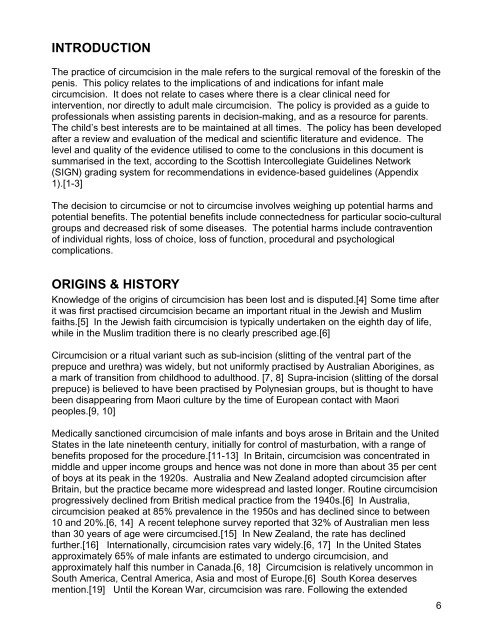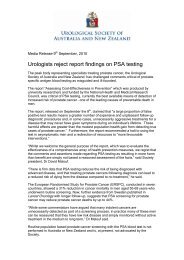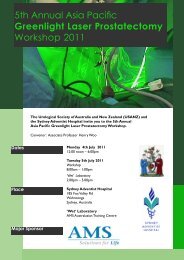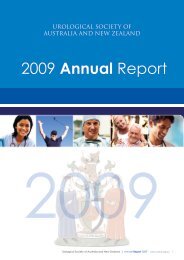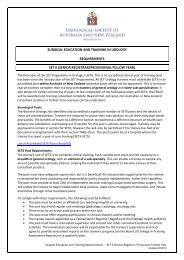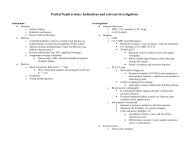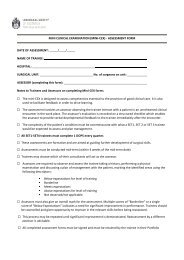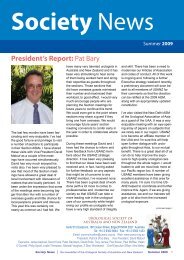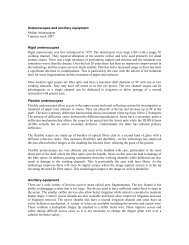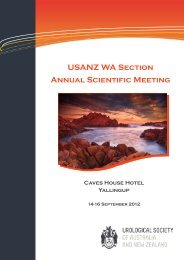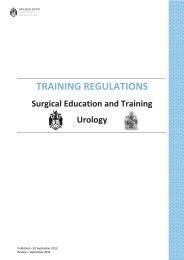CIRCUMCISION OF INFANT MALES
CIRCUMCISION OF INFANT MALES
CIRCUMCISION OF INFANT MALES
You also want an ePaper? Increase the reach of your titles
YUMPU automatically turns print PDFs into web optimized ePapers that Google loves.
INTRODUCTION<br />
The practice of circumcision in the male refers to the surgical removal of the foreskin of the<br />
penis. This policy relates to the implications of and indications for infant male<br />
circumcision. It does not relate to cases where there is a clear clinical need for<br />
intervention, nor directly to adult male circumcision. The policy is provided as a guide to<br />
professionals when assisting parents in decision-making, and as a resource for parents.<br />
The child’s best interests are to be maintained at all times. The policy has been developed<br />
after a review and evaluation of the medical and scientific literature and evidence. The<br />
level and quality of the evidence utilised to come to the conclusions in this document is<br />
summarised in the text, according to the Scottish Intercollegiate Guidelines Network<br />
(SIGN) grading system for recommendations in evidence-based guidelines (Appendix<br />
1).[1-3]<br />
The decision to circumcise or not to circumcise involves weighing up potential harms and<br />
potential benefits. The potential benefits include connectedness for particular socio-cultural<br />
groups and decreased risk of some diseases. The potential harms include contravention<br />
of individual rights, loss of choice, loss of function, procedural and psychological<br />
complications.<br />
ORIGINS & HISTORY<br />
Knowledge of the origins of circumcision has been lost and is disputed.[4] Some time after<br />
it was first practised circumcision became an important ritual in the Jewish and Muslim<br />
faiths.[5] In the Jewish faith circumcision is typically undertaken on the eighth day of life,<br />
while in the Muslim tradition there is no clearly prescribed age.[6]<br />
Circumcision or a ritual variant such as sub-incision (slitting of the ventral part of the<br />
prepuce and urethra) was widely, but not uniformly practised by Australian Aborigines, as<br />
a mark of transition from childhood to adulthood. [7, 8] Supra-incision (slitting of the dorsal<br />
prepuce) is believed to have been practised by Polynesian groups, but is thought to have<br />
been disappearing from Maori culture by the time of European contact with Maori<br />
peoples.[9, 10]<br />
Medically sanctioned circumcision of male infants and boys arose in Britain and the United<br />
States in the late nineteenth century, initially for control of masturbation, with a range of<br />
benefits proposed for the procedure.[11-13] In Britain, circumcision was concentrated in<br />
middle and upper income groups and hence was not done in more than about 35 per cent<br />
of boys at its peak in the 1920s. Australia and New Zealand adopted circumcision after<br />
Britain, but the practice became more widespread and lasted longer. Routine circumcision<br />
progressively declined from British medical practice from the 1940s.[6] In Australia,<br />
circumcision peaked at 85% prevalence in the 1950s and has declined since to between<br />
10 and 20%.[6, 14] A recent telephone survey reported that 32% of Australian men less<br />
than 30 years of age were circumcised.[15] In New Zealand, the rate has declined<br />
further.[16] Internationally, circumcision rates vary widely.[6, 17] In the United States<br />
approximately 65% of male infants are estimated to undergo circumcision, and<br />
approximately half this number in Canada.[6, 18] Circumcision is relatively uncommon in<br />
South America, Central America, Asia and most of Europe.[6] South Korea deserves<br />
mention.[19] Until the Korean War, circumcision was rare. Following the extended<br />
6


